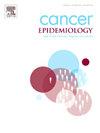It is never too late to stop smoking. Applying working estimates of smoking cessation on five-year overall survival gains after a cancer diagnosis
IF 2.4
3区 医学
Q3 ONCOLOGY
引用次数: 0
Abstract
Background
Detailed data on five-year overall survival (5Y-OS) in relation to smoking cessation after a cancer diagnosis are sparse. Implementation of smoking cessation in cancer treatment centres is also sub-optimal. The aim is to provide working, numeric estimates of 5Y-OS outcomes in relation to quitting smoking to help inform patients with cancer.
Methods
5Y-OS data and hazard ratios (HR) from a moderately sized cohort study from Japan were used to derive survival benefits on Australian cancer survival scenarios ranging from 10 % to 90 % 5Y survival, using standard epidemiological formulas comparing survival in those who recently quit around the time of their cancer diagnosis in comparison to those who continued to smoke.
Results
In a scenario of a cancer type with 90 % 5 y survival e.g. breast, prostate cancer, or melanoma, quitting smoking shows a gain in 5Y-OS of 10 %, and a gain in median survival of 2.1 years. In a scenario of 20 % 5 y survival (e.g. lung, liver, brain, or oesophageal cancer) recent quitting shows a 5Y-OS gain of 2 %, and a median survival gain of three months.
Conclusion
The greater the survival at presentation, the greater the gain by quitting smoking. Future research should aim to produce estimates based on real-world data.
戒烟永远不会太晚。应用戒烟对癌症诊断后5年总体生存收益的工作估计
背景:关于癌症诊断后戒烟的5年总生存率(5Y-OS)的详细数据很少。癌症治疗中心戒烟的实施情况也不理想。目的是提供与戒烟有关的5Y-OS结果的有效数字估计,以帮助告知癌症患者。方法使用来自日本中等规模队列研究的5Y- os数据和风险比(HR),得出澳大利亚癌症生存情景的生存获益,生存范围为10 %至90 % 5Y生存率,使用标准流行病学公式比较在癌症诊断前后戒烟的患者与继续吸烟的患者的生存。结果在乳腺癌、前列腺癌或黑色素瘤等癌症生存率为90% % 5 的情况下,戒烟可使5Y-OS增加10% %,中位生存期增加2.1年。在20% % 5 y生存率(如肺癌、肝癌、脑癌或食管癌)的情况下,最近戒烟显示5Y-OS增加2% %,中位生存期增加3个月。结论发病时生存率越高,戒烟效果越大。未来的研究应该致力于根据真实世界的数据做出估计。
本文章由计算机程序翻译,如有差异,请以英文原文为准。
求助全文
约1分钟内获得全文
求助全文
来源期刊

Cancer Epidemiology
医学-肿瘤学
CiteScore
4.50
自引率
3.80%
发文量
200
审稿时长
39 days
期刊介绍:
Cancer Epidemiology is dedicated to increasing understanding about cancer causes, prevention and control. The scope of the journal embraces all aspects of cancer epidemiology including:
• Descriptive epidemiology
• Studies of risk factors for disease initiation, development and prognosis
• Screening and early detection
• Prevention and control
• Methodological issues
The journal publishes original research articles (full length and short reports), systematic reviews and meta-analyses, editorials, commentaries and letters to the editor commenting on previously published research.
 求助内容:
求助内容: 应助结果提醒方式:
应助结果提醒方式:


